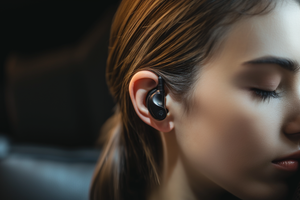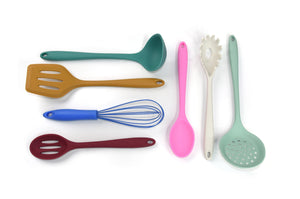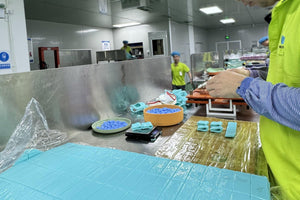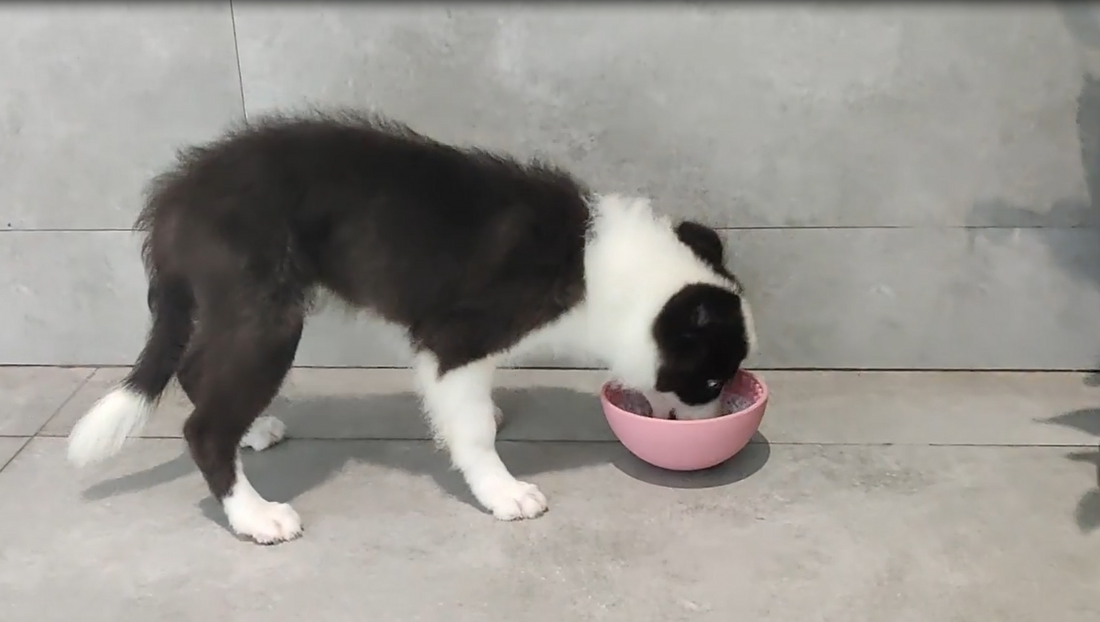The pet product industry has evolved significantly over the past few decades, with manufacturers constantly innovating to provide pet owners with safer, more durable, and comfortable products for their furry friends. One material that has become increasingly popular in the pet product manufacturing space is silicone. Known for its durability, safety, and versatility, silicone offers a range of benefits that can enhance pet products such as bowls, collars, leashes, toys, grooming tools, and more.
If you're a company looking to custom pet supplies, understanding the advantages and applications of silicone, as well as key manufacturing processes, is essential for success.
1. Why Silicone is the Ideal Material for Pet Products
a. Non-Toxic and Safe for Pets
One of the most important qualities that make silicone ideal for pet products is its non-toxic nature. Silicone is free from harmful chemicals like BPA, phthalates, and PVC, which are often found in plastic products. Pets, especially dogs and cats, tend to chew on or lick their toys, bowls, and collars. Silicone’s non-toxic properties ensure that it’s completely safe for pets to interact with, making it a go-to material for products like chew toys, food containers, and even pet pacifiers.
b. Durability and Long-Lasting Performance
Silicone is highly resistant to wear and tear. Unlike plastic or rubber, silicone doesn't degrade easily under UV exposure, heat, or extreme cold. This makes it perfect for outdoor pet products that need to withstand a variety of environmental conditions, such as collars, leashes, and outdoor water bowls. Silicone maintains its shape and integrity even after prolonged use, ensuring that products last longer and save pet owners money on replacements.
c. Flexibility and Comfort
Silicone is incredibly flexible, making it comfortable for pets to wear and interact with. For example, silicone dog collars or leashes are gentle on the pet's skin and won't cause irritation like some leather or nylon alternatives. Silicone's flexibility also allows it to mold to a pet's body shape, providing more comfort and ease of movement.
d. Easy to Clean and Maintain
Pets tend to get their products dirty quickly—whether it’s food residue on a bowl or mud on a collar. Silicone is easy to clean because it’s non-porous and resistant to absorbing dirt, moisture, or bacteria. Many pet silicone products, like feeding mats, grooming tools, and toys, can be washed with soap and water or sanitized in a dishwasher, ensuring cleanliness and hygiene for pets.
e. Hypoallergenic Properties
Silicone is also hypoallergenic, which is essential for pets with sensitive skin or allergies. Unlike some materials that can cause skin reactions or irritation, silicone is gentle and safe for pets to wear or chew, even for extended periods of time.
2. Common Pet Silicone Products
Silicone is a versatile material, and its applications in the pet industry are vast. Here are some common pet silicone supplies that can be manufactured using this durable material:
a. Pet Bowls and Feeding Mats
Silicone pet bowls are popular due to their flexibility, non-slip features, and ease of cleaning. They are perfect for dogs and cats who tend to move their bowls around while eating or drinking. Silicone mats are often used to catch spills and prevent messes, making feeding time cleaner and more convenient for both pets and pet owners.
b. Chew Toys and Teething Products
Silicone chew toys are a great alternative to traditional rubber or plastic toys. They are soft enough to be gentle on pets’ teeth while still providing a satisfying texture for chewing. Silicone teething rings and toys are particularly useful for puppies, helping to soothe sore gums while being completely safe for ingestion.
c. Collars and Leashes
Silicone collars and leashes are durable, waterproof, and easy to clean. These products can come in a range of colors and designs, making them appealing to pet owners who want stylish, comfortable, and functional accessories for their pets.
d. Grooming Tools
Silicone grooming tools, such as brushes and massagers, are gaining popularity due to their gentle texture and ease of cleaning. Silicone is ideal for creating ergonomic brushes that are comfortable for both the pet and the pet owner to use, as well as providing better grip during grooming sessions.
e. Pet Travel Accessories
Silicone can also be used in products like portable water bottles, collapsible food bowls, and travel mats. These products are often lightweight, easy to carry, and compact, making them perfect for pet owners who like to take their pets on trips.
f. Pet Health and Medical Products
Silicone is increasingly being used in pet health products like medicine dispensers, ear cleaners, and even silicone-based pet prosthetics. The material’s biocompatibility and non-reactivity make it suitable for sensitive applications in pet healthcare.
3. Manufacturing Process for Pet Silicone Supplies
When manufacturing pet silicone products, there are several key processes to consider. Below is an overview of the typical silicone manufacturing techniques used in the pet industry:
a. Injection Molding
Injection molding is commonly used to produce high-volume silicone pet products like chew toys, feeding bowls, and collars. The silicone is heated and injected into a mold under high pressure, where it cools and solidifies into the desired shape. This method is ideal for creating complex shapes and designs with high precision.
b. Compression Molding
Compression molding is often used for creating larger, bulkier pet products like mats, beds, and medical devices. The process involves placing a pre-measured amount of silicone into a mold cavity, where heat and pressure are applied to cure the material into a solid shape.
c. Extrusion Molding
Extrusion molding is commonly used for producing silicone tubing and flexible products such as leashes, collars, and harnesses. Silicone is forced through a die to form continuous shapes that are then cut into specified lengths or configurations.
d. Liquid Silicone Rubber (LSR) Molding
LSR molding is ideal for creating high-performance, intricate silicone products with greater flexibility. This process is often used for making specialized pet products such as health devices, grooming tools, or pet accessories that require precision.
e. Post-Curing and Quality Control
After the silicone has been molded, post-curing is often required to further strengthen the material and improve its durability. Quality control measures, such as testing for material consistency, safety checks, and functionality tests, are essential to ensure that the final product meets industry standards and is safe for pets.
4. Considerations for Pet Silicone Product Manufacturing
a. Material Sourcing
Selecting the right type of silicone material is essential for the performance and safety of pet products. Manufacturers need to use food-grade, medical-grade, or medical-silicone materials that are non-toxic, durable, and safe for pets.
b. Design and Functionality
The design of the product should take into account the pet’s comfort, safety, and usability. For example, pet collars should be adjustable, lightweight, and non-chafing, while chew toys should be soft enough to avoid damaging teeth yet durable enough to withstand heavy use.
c. Regulatory Compliance
Pet products must adhere to various safety regulations, including standards for non-toxic materials, durability, and functionality. Manufacturers should be familiar with local and international regulations regarding pet product safety, such as the Consumer Product Safety Commission (CPSC) or EU regulations.
d. Branding and Packaging
As the pet product market grows, branding and packaging are critical components of product success. Pet owners look for products that are not only functional but visually appealing and easy to use. Consider custom packaging options that highlight the safety and durability of silicone products.
In Summary
Silicone has proven to be a highly beneficial material for pet product manufacturing, offering a range of advantages in terms of safety, durability, comfort, and ease of maintenance. As the demand for high-quality, eco-friendly, and customizable pet supplies continues to rise, silicone will undoubtedly remain a key material for pet manufacturers.
Whether you're producing pet bowls, toys, grooming tools, or travel accessories, incorporating silicone into your product line can help you create a competitive, durable, and customer-friendly offering. By understanding the manufacturing processes and key considerations in pet silicone supplies production, manufacturers can successfully meet the growing expectations of pet owners and ensure a strong presence in this dynamic market.
About Author
We are dedicated to pushing the boundaries of possibility in silicone product manufacturing and our extensive range of inhouse designs and molds across baby, pet, homewares and more allows companies to customize and create products specific for their brand and market needs.
Whether you are looking for a company to bring your ideas and brand to life or looking for ready to go items with packaging and branding, WOLIFE is ready to help your business grow.
WOLIFE looks forward to collaborating with you!


 Using LSR in Hearing Components
Using LSR in Hearing Components Why Silicone Cooking Utensils and Baking Trays Don’t Melt – The Science Explained
Why Silicone Cooking Utensils and Baking Trays Don’t Melt – The Science Explained 10 Creative Products You Didn’t Know Could Be Made with Silicone
10 Creative Products You Didn’t Know Could Be Made with Silicone Common Quality Control Challenges in Silicone Manufacturing
Common Quality Control Challenges in Silicone Manufacturing